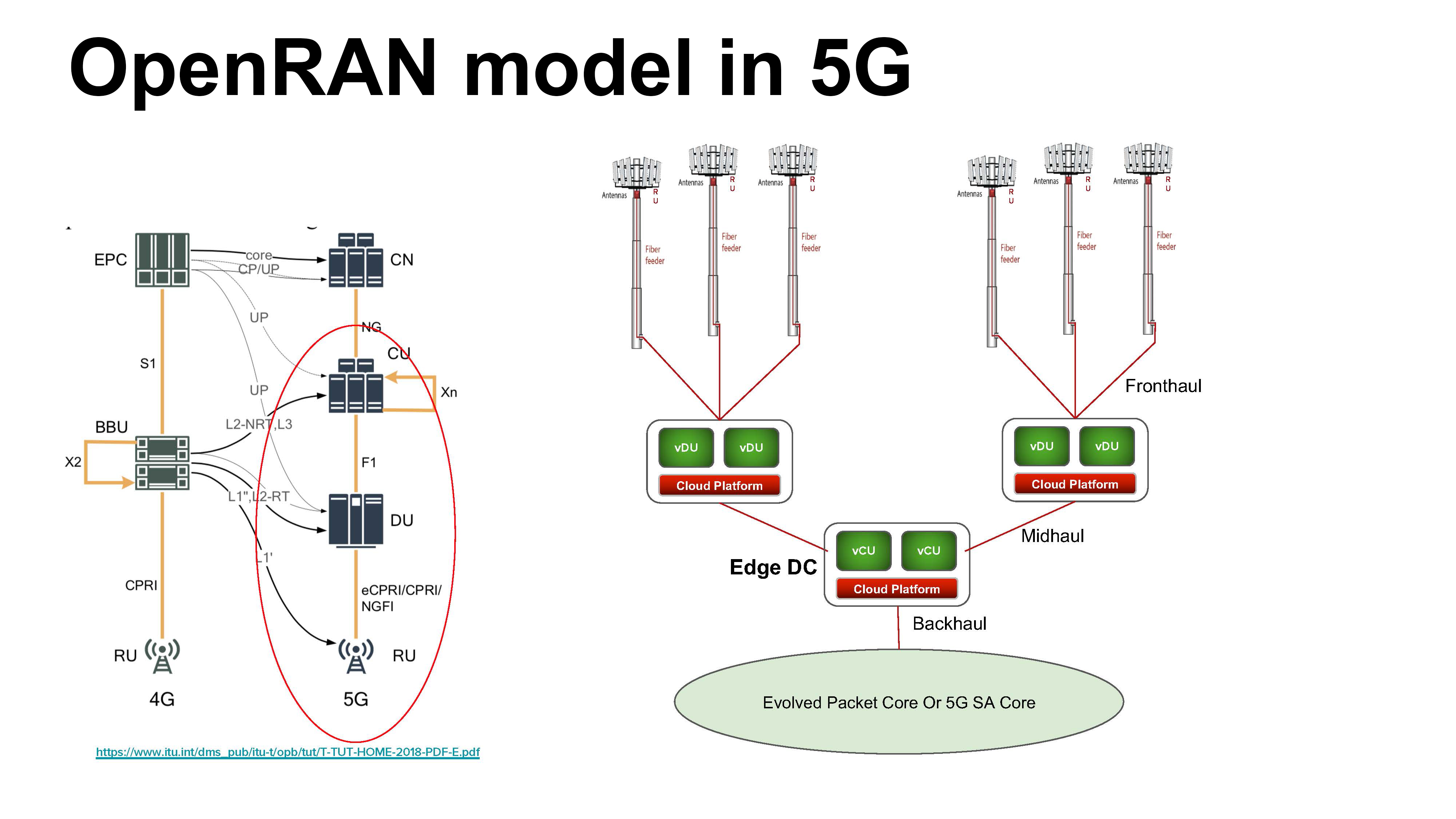Cloud-native architectures will define the vRAN future
Cloud-native applications and architectures are the future of 5G networks, says Red Hat’s Global Telco Partner Technologist, Timo Jokiaho.

The building of virtual Radio Access Networks (vRAN) and the use of edge data centers has long been a major topic in the mobile communications sector – and this development affects both the current 4G and the future 5G networks. However, technology continues to evolve away from virtualized workloads and towards containers and cloud-native architectures and applications.
Traditional radio access networks consist of antennas, base stations (baseband units – BBUs), and controllers. This makes them some of the most expensive components in a mobile network. What’s more is that they also require specialized hardware and software. Virtualized RAN (vRAN) solutions overcome these disadvantages, which is why they are replacing proprietary, hardware-based radio access networks in ever-greater numbers. The vRAN is based on Network Functions Virtualization (NFV) that transforms a typical hardware-based network architecture to a software-based environment. There still might be a need for hardware acceleration in some form. Some BBU control functions are provided on virtual machines (VMs) that run on “Commercial-Off-The-Shelf (COTS)" servers in an edge data center. This all results in disaggregation in two dimensions:
1. separation of hardware and software and
2. functional split of the base station.
4G and 5G as edge use cases
The trend towards edge computing affects both 4G and 5G networks. The main advantages of edge computing include zero-touch provisioning, multi-cluster management, a smaller footprint, high scalability and automated operation. vRAN or disaggregated RAN can be seen as a specific use case or workload on edge data centers.
There are a few differences between 4G LTE and 5G when it comes to edge implementation, especially in terms of how the functionalities of the base stations are divided between the antenna locations and the edge data centers.
In 4G LTE networks, the traditional status quo is a distributed RAN with baseband units on the antenna side, meaning the full functionality of the base stations is distributed across the individual antenna locations. This results in considerable costs, potential challenges of radio interference, and high energy consumption. An edge approach moves away from a distributed RAN with BBUs and towards a centralized vRAN. Some of the functions of the base stations are centralized in virtualized BBUs (vBBUs), meaning the base station is split.
In 5G networks, on the other hand, disaggregation in edge implementation is divided into three parts: Radio Units (RUs on antenna sites), Distributed Units (DUs), and Centralized Units (CUs).
Get up to speed with 5G, and discover the latest deals, news, and insight!
The CUs are designed as a distributed cloud solution with low space requirements, while the DUs assume tasks such as real-time processing, supporting the Precision Time Protocol (PTP), hardware acceleration such as field-programmable gate arrays (FPGAs), smart network interface cards (Smart NICs) and even Application-Specific Integrated Circuits (ASICs).
From virtualized to containerized workloads
At the edge, mobile network operators are already using Network Functions Virtualization such as Red Hat OpenStack with distributed nodes for software-defined wide area networks (SD-WAN) and mobile applications. However, introducing vRANs by using virtual machines on standard servers in an edge data center cannot be the final step but is a good first step. It has often been shown that the current virtual network functions (VNFs) – and vRANs in particular – are unable to meet expectations in terms of functionality, easy implementation, or management. That’s why the next step must be using applications that are compatible with the cloud or, even better, cloud-native applications. And this development is currently emerging in the telecommunications sector, with the use of cloud-native applications on Kubernetes-based container platforms such as Red Hat OpenShift for 5G Core (5GC), Edge and RANs, for example.
Cloud-native applications are designed as lightweight containers and loosely coupled microservices. As far as network operators are concerned, the main advantages of these types of applications are the lower development costs, the simpler upgrades and modifications, as well as the potential for horizontal scaling. This also avoids vendor lock-in.
In essence, cloud-native application development is characterized by service-based architecture, API-based communication, and container-based infrastructure. Service-Based Architecture (SBA) is defined in the 5G standard.
Service-based architectures such as microservices enable modular, loosely coupled services to be built. The services are provided via lightweight, technology agnostic APIs that reduce the complexity, effort, and expense during deployment, scaling, and maintenance. In addition, cloud-native applications are based on containers that enable operation across different environments. Container technology uses the operating system’s functions to divide the available computing resources across multiple applications and at the same time ensure the applications are secure. Cloud-native applications also scale horizontally, meaning other application instances can be added easily – often through automation within the container infrastructure. The lower overheads and high density enable numerous containers to be hosted within the same virtual machine or the same physical server.
Cloud-native architecture as foundation of 5G network slicing
It is becoming increasingly apparent that the transition to 5G is a transition to containers and cloud-native applications. This means that virtualized workloads are evolving into containerized workloads. Virtualization will be there for years to come though, in one form or another.
The advantages of the cloud-native approach can be seen in particular in the main 5G use cases, and thus in network slicing, or in other words, the provision of multiple virtual networks on a common physical infrastructure.
In principle, there are the following three use cases when it comes to 5G:
- eMBB – Enhanced Mobile Broadband: high data transfer rates and support for extreme traffic densities
- mMTC – Massive Machine-type Communications: optimization of M2M and IoT applications by networking a large number of devices such as smart-home or smart-city models
- URLLC – Ultra-reliable and Low-latency Communications: support for critical applications with low latency in areas such as predictive maintenance or connected cars as well as augmented and virtual reality, for example.
A virtualized RAN that is both container-based and cloud-native is a key component for the 5G network transformation and in providing optimal support for these technologies and use cases. Cloud-native architecture in particular allows initial costs to be kept to a minimum per slice and the scaling up to thousands of slices of all sizes to be cost-efficient.
There is no question that 5G will power a new generation of services thanks to its higher data rates and extremely low latencies. To be able to leverage their advantages to the fullest extent possible, however, telecommunications companies need to bring their data processing and processing power closer to the “end user”. The end user can ultimately also be a smartphone, a connected car, or a robot in a production process. The task clearly demonstrates that both edge computing and cloud-native capabilities are the focus of mobile network operators’ activities at the moment.
Some mobile providers have already set up commercial, if locally restricted, 5G environments, and numerous new projects are on the horizon. vRAN, edge computing, and cloud-native are the crucial technology drivers in this area, and open source solutions – such as Red Hat OpenShift – will form the basis of disaggregated 5G infrastructures.
- Get your hands on the hottest 5G phones
- Millimeter wave: the secret sauce behind 5G
- The complete guide to 5G security
- Discover the truth behind 5G dangers
- 5G towers: everything you need to know
Timo Jokiaho, Global Telco Partner Technologist at Red Hat, focuses on network functions virtualisation (NFV). He works with service providers, network equipment providers, system integrators and independent software vendors to progress the NFV agenda in the industry.
Previously Jokiaho led software technology planning in Huawei Technologies, focusing on the base platform domain (operating systems, virtualization, and telco cloud), and also planning for terminal software platform, including Android and some experimental technologies. Jokiaho also led Samsung’s device software R&D in Finland, and prior to this, he led the Strategy, Technology & Architecture section at Nokia Siemens Networks.


